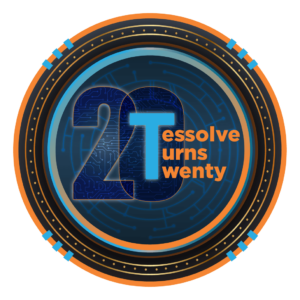The semiconductor industry plays a pivotal role in today’s technology-driven world, powering everything from smartphones and laptops to electric vehicles and renewable energy systems. However, this industry’s rapid growth has raised concerns about its environmental impact. As the demand for semiconductors continues to surge, it becomes crucial to address sustainability issues in semiconductor engineering services. In this blog, we’ll explore the advancements and innovations that are shaping a more sustainable future for semiconductor manufacturing.
The Environmental Challenge
Semiconductor manufacturing has long been associated with resource-intensive processes, high energy consumption, and the generation of hazardous waste. As global demand for electronic devices continues to grow, so does the pressure to minimize the industry’s carbon footprint and environmental impact. Fortunately, the semiconductor industry has been actively working on implementing sustainable practices and innovations to address these challenges.
Energy Efficiency in Manufacturing
One of the most significant contributors to the environmental impact of semiconductor manufacturing is its high energy consumption. To mitigate this, semiconductor companies are investing in cutting-edge technologies and processes that improve energy efficiency throughout the manufacturing cycle.
Innovative Solutions
- Green Fab Design
“Green fabs” are semiconductor manufacturing facilities designed with a strong focus on sustainability. These facilities incorporate advanced HVAC systems, optimized cleanroom environments, and energy-efficient equipment. By reducing energy consumption and emissions, green fabs help semiconductor process engineers and companies minimize their carbon footprint.
- Advanced Materials
The use of advanced materials can significantly enhance energy efficiency. For example, silicon carbide (SiC) and gallium nitride (GaN) are wide-bandgap materials that enable more energy-efficient power devices, reducing energy losses and improving overall performance.
Waste Reduction and Recycling
Another critical aspect of semiconductor sustainability is waste reduction and recycling. The semiconductor manufacturing process generates various types of waste, including chemical waste, wastewater, and electronic waste (e-waste). Innovations in waste management are helping the industry become more environmentally responsible.
- Chemical Recycling
Chemical recycling processes are being developed to recover and reuse valuable materials from semiconductor manufacturing waste. These processes can reduce the need for new raw materials, lower waste disposal costs, and decrease the environmental impact of the industry. - E-Waste Recovery
E-waste is a significant concern in the semiconductor industry, given the rapid obsolescence of electronic devices. Companies are exploring ways to extend the lifespan of semiconductors through repair and refurbishment programs. Additionally, initiatives for responsible e-waste disposal and recycling are gaining traction.
Water Conservation
Water is a critical resource in semiconductor manufacturing, particularly in the cleaning and rinsing processes. To address water scarcity concerns, the industry is adopting innovative water conservation practices.
- Closed-Loop Water Systems
Closed-loop water systems recycle and purify water used in manufacturing processes, reducing overall water consumption. These systems also help prevent the discharge of contaminated wastewater into the environment. - Ultrasonic Cleaning
Ultrasonic cleaning technology uses high-frequency sound waves to clean semiconductor components more efficiently. This reduces the amount of water and chemicals required for cleaning, making the process more sustainable.
Green Packaging and Testing
Sustainability in semiconductor systems integrator extends beyond manufacturing to packaging and testing. Green packaging solutions aim to reduce material waste and environmental impact during product packaging and transportation.
- Eco-Friendly Packaging
Companies are exploring eco-friendly packaging materials and designs that minimize waste and can be recycled or reused. Sustainable packaging choices contribute to reducing the carbon footprint of semiconductor products. - Testing Innovations
Advanced testing methodologies are being developed to improve semiconductor quality and reduce the likelihood of defective products. This not only saves resources but also minimizes the need for manufacturing replacement components, further promoting sustainability.
Renewable Energy Integration
To reduce the carbon footprint of semiconductor manufacturing, the industry is increasingly turning to renewable energy sources to power its operations.
- Solar and Wind Power
Semiconductor companies are investing in solar and wind energy installations to generate clean electricity for their manufacturing facilities. This shift toward renewable energy sources aligns with global efforts to combat climate change.
Collaborative Efforts
Sustainability in semiconductor engineering is not a challenge that can be tackled in isolation. Industry-wide collaboration is essential to driving meaningful change.
- Industry Partnerships
Semiconductor companies are partnering with environmental organizations, research institutions, and government agencies to develop sustainable practices, share best practices, and establish industry standards for sustainability.Also Know:PCB Layout for High-Frequency Applications: Challenges and Solutions
Conclusion
Sustainability is a pressing concern for the semiconductor industry, and it’s encouraging to see the significant advancements and innovations being made to address these challenges. From energy-efficient manufacturing processes to waste reduction and renewable energy integration, the semiconductor industry is actively working toward a more sustainable future.
Tessolve is a semiconductor leader in design and engineering services, providing its customers with a wide range of services, including IC design, ASIC design, FPGA design, PCB design, test and verification, and product engineering.


